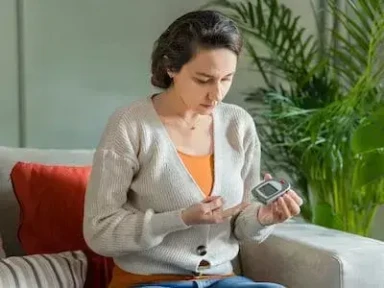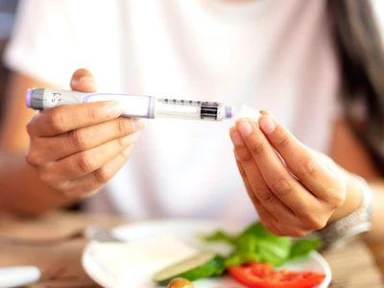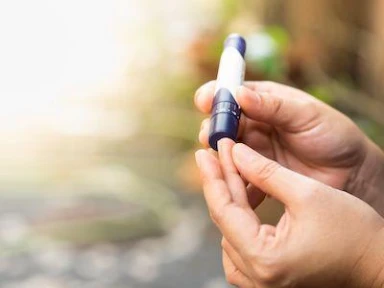Post-exercise hypoglycemia in relation to medication regimen among adults with type 2 diabetes
Key takeaway
Adults with T2D, enrolled in an exercise-based cardiac rehabilitation program showed:
-
Higher incidence of post-exercise hypoglycemia in those on pre-mixed insulin and basal-bolus insulin medications.
-
Greater reduction in blood glucose was related to greater pre-exercise blood glucose, independent of BMI and total exercise duration.
Why this matters
Limited studies on SMBG changes post-exercise, especially in adults with T2D on diabetes medications.
- This has led to limited understanding of medicationrelated hypoglycemia.
Study ascertained if the magnitude of blood glucose reduction and incidence of hypoglycemia were related to the medication regimen
Study design
Retrospective review included adults (N = 52) with T2D enrolled in a structured exercise program within a cardiac rehabilitation facility*
Date collected
-
Demographics
-
Medications
-
Exercise prescription
-
Patient-reported pre-/post-blood glucose values
Primary outcome
-
Magnitude of change in capillary blood glucose levels in pre- to post-exercise
-
Hypoglycemia: Defined as blood glucose ≤4.0 mmol/L
-
Key results
52 participants were included (males = 46.2%; mean age = 62.7 years; mean HbA1c level = 7.7%)
- Overall incidence of hypoglycemia in all insulin users = 14.5%
Post-exercise hypoglycemia
-
13 events reported in 10 participants†, 42 participants had no event
-
Hypoglycemia event group: Mean decrease in blood glucose from pre- to post-exercise = 3.5 mmol/L (over a mean exercise duration of 27.9 min)
-
Post-exercise hypoglycemia was associated with the prescribed use of pre-mixed insulin:
-
Pre-mixed insulin vs non-insulin users = 50% vs 3%; P <0.0001
-
-
Post-exercise hypoglycemia was associated with the prescribed use of insulin
-
Basal-bolus vs non-insulin users = 11.1% vs 3%; P = 0.04
-
Post-exercise-induced reduction in blood sugar
-
Greater post-exercise capillary blood glucose reduction (1.6, range 2–11 mmol/L) was related to greater pre-exercise blood glucose (beta): –0.46 mmol/L; P <0.0001
-
Independent of BMI = –0.01 mmol/L per BMI unit; P = 0.78
-
Total exercise duration = 0.01 mmol/L per minute; P = 0.58
-
-
Hypoglycemic events were less likely to be associated with higher pre-exercise blood glucose (OR: 0.42; P <0.03)
Limitations
-
Retrospective study, focused on hypoglycemia following aerobic exercise
-
Study could not be controlled for timing of medications and nutritional intake, pre-existing hypoglycemia experience, hypoglycemia fear, or knowledge of hypoglycemia prevention strategies
-
Individual factors‡ which may affect medication half-life and potentiate effects of hypoglycemic medications were not examined
-
Analysis was not powered to evaluate the relationship between post-exercise hypoglycemia and different classes of antihyperglycemic agents
* Study period: February to December 2012.
† Of these, participants were prescribed non-insulin antihyperglycemic medications + insulin combination therapy (n = 5), non-insulin antihyperglycemic medications only (n = 4) or insulin only (n = 1).
‡ Such as renal function.
BMI, body mass index; HbA1c, glycated hemoglobin; OR, odds ratio; SMBG, self-monitored blood glucose; T2D, type 2 diabetes.
- Banks L, Sparrow L, Sandison N, Oh P, Colella TJF. The effect of insulin on post-exercise hypoglycemia in adults with type 2 diabetes participating in outpatient exercise-based cardiac rehabilitation. Eur J Appl Physiol. 2021. doi: 10.1007/s00421-021- 04781-7. Epub ahead of print. PMID: 34468859.

-(1).jpg7/jcr:content/science%20hero%20(2)%20(1).jpg)


